Gluten Free Perfect Pie Crust Recipe
Updated Feb 15, 2021, Published Nov 08, 2013
This post contains affiliate links. Please see our disclosure policy.
Bakers, start your ovens! Fall is what I consider to be the beginning of pie season. The temperatures start to drop, crisp apples and pears fill the produce shelves and a freshly baked pie seems to be the perfect way to cozy-up a chilly evening. And before you know it we launch into Thanksgiving and the beginning of Holiday Season. I ask you – what is Thanksgiving without pumpkin pie?
For many years after converting to a gluten free diet I made crust-less pies and was perfectly happy. After all a crust-less pie you can safely eat is better than a pie with crust you can’t! But as time went by, I started to resent my crust-less life and started using nuts and gluten-free cookies as a base for my pies. Nothing wrong with that and in fact in some cases, such as my chocolate peanut butter pie, a nut crust is the ideal choice. But what was missing for me was the OTHER choice – a white, flaky, traditional pie crust just like Grandma used to make but without the gluten. So I embarked on a mission to make the perfect gluten free pie crust. The first thing I learned is you can’t let pie crusts intimidate you. It is not only possible to make a great gluten-free pie crust, it is completely do-able and many of those who have tried mine, say they prefer my gluten-free crust to regular wheat crusts they have had.
Here are my tips for making the perfect gluten free pie crust:
1. Cold, cold, cold! Get your ingredients cold before using them. Cut up your butter or shortening into small pieces and pop it in the freezer for 15 to 30 minutes before starting your pastry. Put ice cubes in your water for a good 10 minutes before using it to really chill it down.
2. Use a food processor. The speed with which the food processor can combine the ingredients and cut in your butter or shortening is so much faster than if you do it by hand and results in a flakier crust. Of course if you don’t have a food processor, just cut the shortening or butter in by hand but work quickly and don’t over do it. Bigger pieces of butter or shortening are not only OK, but preferred.
3. Be skimpy on the water. The biggest mistake most people make in preparing pie crusts (whether it be gluten-free or not) is adding too much water. Add just enough so that the ingredients hold together when squeezed in your hand. Too much water will result in a tough crust.
4. Give it a rest! Let your pie crust dough rest for at least an hour before rolling. Many people think this is to let the gluten rest, which would make no sense in a gluten-free recipe, but in truth what you are doing is letting the moisture distribute evenly. Never skip the resting period. Here’s an easy tip – pour your crumbly mixture into a large food storage bag and shape the dough into a disk using the bag to help you – it is less messy this way. Then just pop the bag into the fridge for the crust’s resting period.
5. Extrude – don’t roll. Gluten-free pie crust is more fragile than regular pie crust as it lacks the sticking power of the gluten. It is much easier to employ the “extrusion method”. Simply place your dough on a piece of wax paper that is dusted lightly with gluten-free flour, then sprinkle a little more flour on the dough and top with another piece of wax paper and roll it out. This will help keep your crust in one piece. Using the wax paper also helps in transferring the dough to the pie plate. If a piece falls off or breaks, just pinch it back together, don’t be afraid to show your pie crust who’s boss.
6. Use great ingredients. The sum of the parts will only be as good as what you put in it. Start with a good, pastry quality all purpose gluten-free flour blend that is not grainy or cardboard tasting. For a perfect-just-like-Grandma-used-to-make pie crust you need a flour blend that has a high starch content and some xanthan gum. You need the crust to be flaky but still stick together. If you don’t have a brand you like then make your own using either super fine or Asian flours, they are milled much more finely than most. Also use the best quality butter you can buy and always use either kosher or fine sea salt. If you can not have dairy then substitute the butter with all vegetable solid shortening. In my opinion, the butter flavored shortenings do not produce as good a flavor as the regular, non-flavored. I prefer to use Organic All Vegetable Non-hydrogenated shortening from Spectrum. And yes, I add a bit of regular sugar to my pie crusts, it helps with browning and after all – it’s dessert!
7. To “blind bake” (pre-bake the crust for use when the filling will not be baked such as cream and pudding pies) your crust place a piece of parchment or foil on top of the crust and fill with either pie weights or dried beans. I use dried beans, far less expensive and they can be used over and over again.
This recipe is for sweet pies, if using for a savory dish such as quiche, cut the sugar down to 1 teaspoon. At the end of the recipe is a variation for a Chocolate Pie Crust which is a unique twist for pudding-type or berry pies.
Shop This Post

Gluten Free Perfect Pie Crust Recipe
Ingredients
- ½ cup unsalted butter or solid, all vegetable non-dairy shortening
- 2 to 4 tablespoons cold water
- *1¼ cups All Purpose Gluten Free Flour Blend plus more for rolling
- 1 teaspoon kosher or fine sea salt
- 2 tablespoons sugar
Instructions
- Cut butter into ½ inch pieces and place in the freezer for 15 – 30 minutes.
- Add some ice cubes to the water and let it get ice cold while preparing the dry ingredients.
- Combine the flour blend, salt and sugar in the bowl of a food processor. Pulse 5 -6 times to combine. Add the butter and pulse 6 -8 times or until the mixture resembles coarse meal with some pea size pieces of butter.
- With processor running, add ice water 1 tablespoon at a time until the mixture just barely starts to clump together. If you pinch some of the crumbly dough together and it holds then you have enough water, if not add more a little at a time. You do not want to add any more water than is absolutely necessary.
- Remove the dough from the machine and form into a disk. Wrap the disk in plastic wrap and refrigerate for at least one hour or for as long as 2 -3 days. Since the dough is so crumbly and does not hold together at this point, I find it easier (and far less messy) to pour the mixture into a large food storage bag and form it into a disk using the bag to help. Then just close up the bag and put it in the fridge. Remove dough from fridge 5 minutes before rolling.
- To roll the dough, lay a piece of waxed paper on a work surface and sprinkle with some flour blend. Lay the chilled disk on the floured paper, sprinkle with some more flour and lay on another piece of waxed paper. Roll the dough into a circle approximately 12 inches wide. Remove the top sheet of waxed paper and carefully transfer into a 9 inch pie plate and remove the waxed paper. Push the dough very gently down so it lines the bottom and sides of the pie plate. If the dough splits or breaks apart just push it back together. Trim the edge of the pie crust to about ½ – ¾ inch over hang. Tuck the overhang under and pinch the dough into a decorative finish.
To Pre-bake (or Blind Bake) a pie crust:
- Sometimes a recipe will call for a pre-baked or blind baked pie crust, here’s how to do that.
- Freeze the pie crust in the pie plate for at least 30 minutes.
- Preheat oven to 350 degrees.
- Place a piece of parchment paper (or foil) in the bottom and up the sides of the pie crust. Fill with dried beans, rice or pie weights. (I prefer dried black beans as they help distribute the heat better and are much less expensive than pie weights. I use the same beans over and over.) Bake the crust for 20 minutes. Remove the weights and waxed paper, poke a few holes in the bottom of the crust using a fork and return to the oven for 10 minutes or until golden brown.
- Let pie crust cool completely before filling.
Notes
Chocolate Pie Crust Variation: Add 1 ½ tablespoons cocoa powder to the dry ingredients and proceed as above. The dough may require just a tad more water. Make sure to brush off all the excess flour blend after rolling to keep the dark color.
Nutrition
Nutrition information is automatically calculated, so should only be used as an approximation.
The views and opinions expressed on this blog are purely the blog owners. This blog accepts free manufacturers’ samples and forms of cash advertising, sponsorship, paid insertions or other forms of compensation.


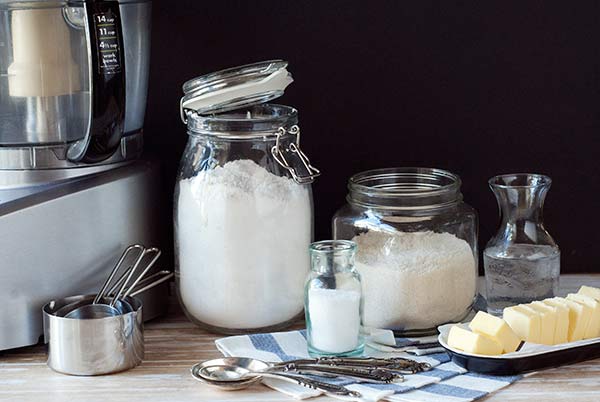
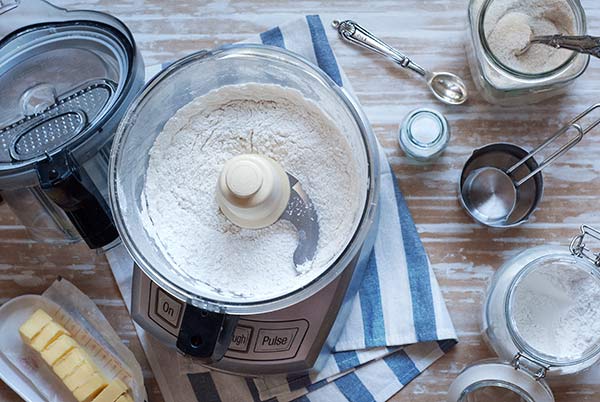
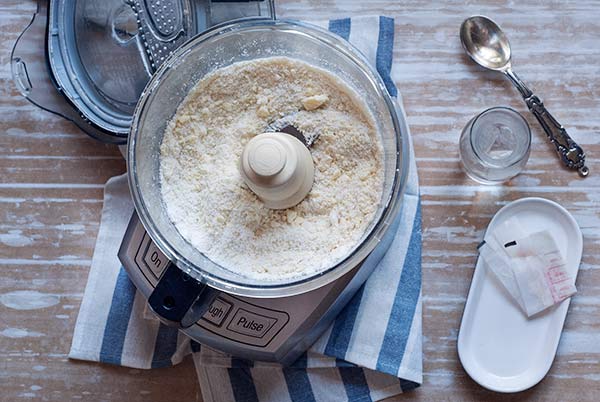
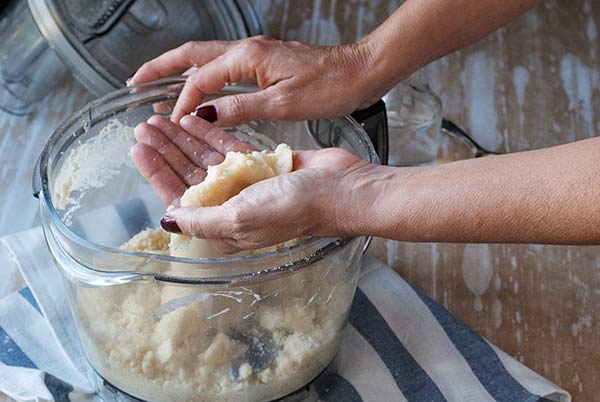
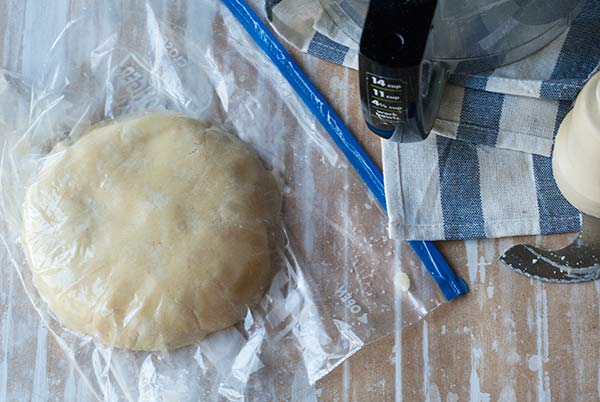
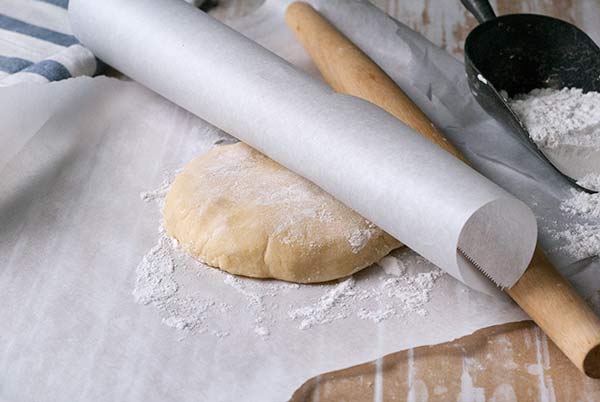
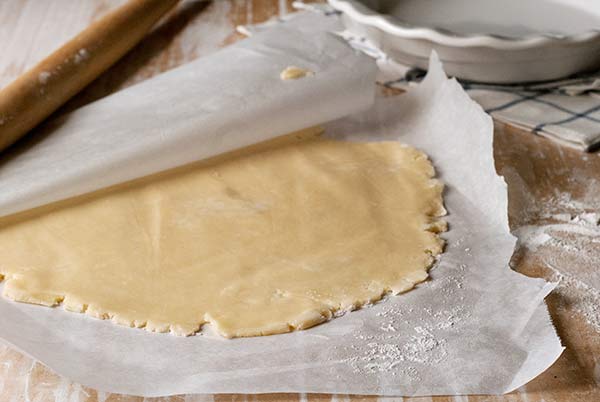
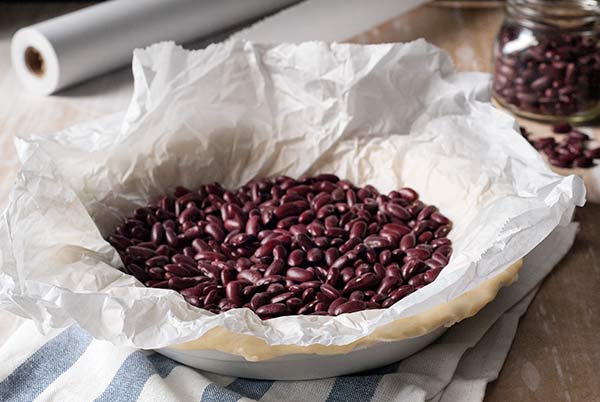
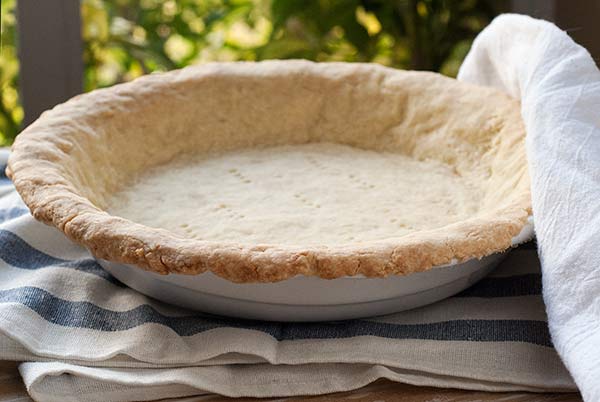

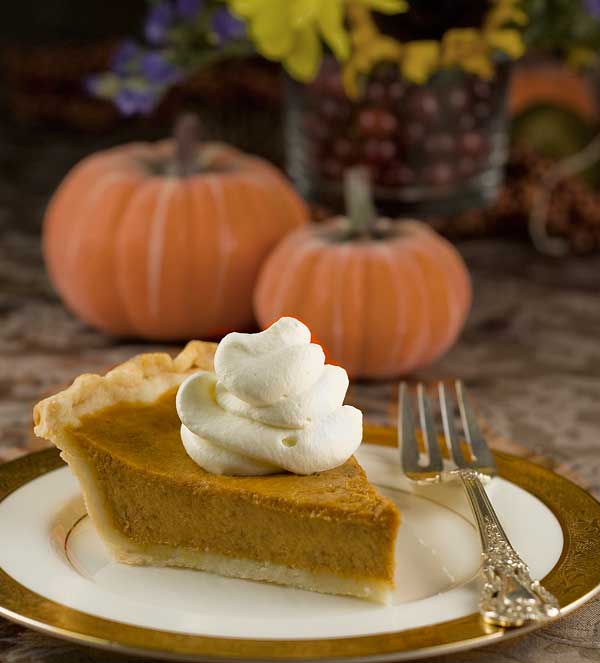












I.AM.ECSTATIC. about this recipe!!! I have a friend headed over to my place now to make a gluten-free apple pie. Neither of us have made a pie before so this should be fun…and interesting! Wish us luck! :-)
This should be fun! Enjoy.
So… I found this recipe to be fine, until I actually par-baked it (blind baked). The rim crumbled completely off and I followed your recipe exactly (using veg shortening). I even pulled out my food processor per your suggestion. It all seemed right until, well, it wasn’t. Too bad. It also doesn’t taste super great. But really, why does it crumble away into nothing? I am very disappointed.
What type flour did you use? If you don’t start with a good flour, your results won’t be good.
I just wanted to thank you for this recipe. My father-in-law cannot have gluten and so the holidays are particularly difficult. I wanted to bake an apple pie for this Thanksgiving that we all can enjoy and now I absolutely will be able too. I decided to teste the recipe out this afternoon, but not wanting to make a full pie I made what my Grandma calls cinnamon sticks (left over pie dough rolled out smeared with butter, sugar, cinnamon, fold in half, top with more butter and bake). I halfed your recipe and followed the instructions to T and I must say I was pleasantly surprised with how it turned out. Tasted nearly the same, actually alittle better as the dough had an almost Shortbread like flavor. My father-in-law is in for a real treat, so thank you again!
Oh it is my pleasure. Enjoy your holidays and you are such a sweet daughter in law to be so caring!
Try using chilled coconut oil for your shortening. It’s a healthy and yummy alternative to butter!
Thanks Brooke, sound great!
I’m just starting to experiment with gf, and I LOVED this crust! I made your flour mix, followed your directions to a T, and it turned out perfect. Made with butter, it was savory and delicious.
Thaanks Sue, so happy you enjoyed it!!!
Can I still do this recipe without a food processor? What is the best way?
Yes, use a pastry cutter or two forks to work the butter into the flour and work quickly. The old fashioned way :)
I followed this recipe exactly as directed and used it to make a Pumpkin pie and a sweet potato pie, and it is great. The crust turned out perfect, flaky and delicious. It will be my gluten free pie crust from now on, ending years of experimenting with other recipes.
Don
Yay, so happy you like it!
Thank you Carol! I can’t wait to try out your tips this Thanksgiving! This is my very FIRST holiday season being gluten free! So I’m nervous and excited at the same time. Since I’m new to this, my problem is that I have an all purpose baking flour from Bob’s Red Mill that doesn’t have xanthan gum in it. It contains garbanzo bean flour, potato starch, tapioca flour, white sorghum flour, and fava bean flour….but no xanthan gum! Will your recipe still work for me? I do have xanthan gum separately. Should I add some to it, and if so, how much? Thanks in advance for your help. I will have to really read through your blog :)
Happy Thanksgiving!
Hi Erin, since I am not sure about how much starch is in Bob’s I would add xanthan gum – I would add 2 scant teaspoons.
Do you know if you can make this without any gums?
I have never tried it but I think (that being the operative word) that the starch content is high enough you can get away without it. If you do try it, can you report back? I would love to know. Happy Thanksgiving!
Should I prebake the piecrust for Pecan Pie?
I never do! I just pour my filling in, top with pecans and bake! Happy Thanksgiving!